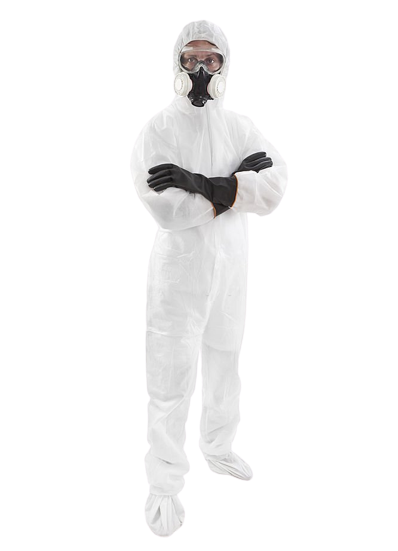Water damage can be a homeowner’s worst nightmare, especially when it leads to the growth of toxic mold. Mold thrives in damp environments, and if not addressed promptly, it can pose serious health risks to you and your family. Understanding the warning signs of mold growth is crucial for maintaining a safe living environment. In this article, we will explore five key indicators that toxic mold may be present in your home after experiencing water damage.
Understanding Mold and Its Risks
Mold is a type of fungus that can grow on various surfaces, particularly in areas with high moisture levels. While some molds are harmless, others can produce mycotoxins that are detrimental to human health. Exposure to toxic mold can lead to a range of health issues, including respiratory problems, allergic reactions, and even neurological symptoms.
The Importance of Mold Removal
Prompt mold removal is essential to prevent further damage to your property and safeguard your health. If you suspect mold growth, it’s vital to act quickly. Mold remediation involves not only removing the visible mold but also addressing the underlying moisture issues that allowed it to thrive in the first place.
Common Sources of Water Damage
Water damage can stem from various sources, including:
- Leaking pipes: Plumbing issues can lead to hidden leaks that create ideal conditions for mold growth.
- Flooding: Natural disasters can inundate homes, leaving behind moisture that promotes mold development.
- Roof leaks: Damaged roofs can allow water to seep into your home, especially during heavy rain.
- Condensation: Poor ventilation in areas like bathrooms and kitchens can lead to moisture buildup.
1. Persistent Musty Odor
One of the first signs of mold growth is a persistent musty smell in your home. This odor is often a result of mold spores releasing volatile organic compounds (VOCs) into the air.
Identifying the Source of the Odor
- Check damp areas: Inspect basements, bathrooms, and kitchens for hidden mold growth.
- Look for water damage: Areas with previous water damage are more likely to harbor mold.
Addressing the Odor
If you detect a musty smell, it’s crucial to conduct a thorough mold inspection. Professional mold testing can help identify the type and extent of the mold present, allowing for effective remediation.
2. Visible Mold Growth
Visible mold is perhaps the most obvious sign of a problem. Mold can appear in various colors, including black, green, orange, or white, and can grow on walls, ceilings, and other surfaces.
Common Locations for Mold Growth
- Bathrooms: High humidity levels make bathrooms a prime location for mold.
- Basements: Often damp and poorly ventilated, basements can harbor significant mold growth.
- Around windows: Condensation can lead to mold growth on window sills and frames.
Taking Action
If you notice visible mold, it’s essential to contact a mold remediation specialist. They can assess the situation and implement a comprehensive mold removal plan.
3. Health Symptoms
Exposure to toxic mold can lead to various health issues, particularly for individuals with preexisting conditions such as asthma or allergies.
Common Health Symptoms Associated with Mold Exposure
- Respiratory issues: Coughing, wheezing, and shortness of breath can indicate mold exposure.
- Allergic reactions: Symptoms like sneezing, itchy eyes, and skin rashes may arise from mold spores.
- Neurological symptoms: In some cases, exposure to toxic mold can lead to cognitive issues, including memory loss and difficulty concentrating.
Monitoring Your Health
If you experience any of these symptoms, especially after water damage, it’s crucial to seek medical advice and consider a mold inspection for your home.
4. Water Stains and Discoloration
Water stains on walls, ceilings, or floors can indicate past or present water damage, creating an environment conducive to mold growth.
Identifying Water Damage
- Ceiling stains: Brown or yellow stains on ceilings may indicate a roof leak.
- Wall discoloration: Peeling paint or wallpaper can signal moisture issues behind the surface.
Remediation Steps
If you notice water stains, it’s essential to investigate the source of the moisture. Repairing leaks and conducting mold testing can help prevent further mold growth.
5. Increased Humidity Levels
High humidity levels in your home can create an ideal environment for mold to flourish.
Monitoring Humidity Levels
- Use a hygrometer: This device measures indoor humidity levels. Ideally, humidity should be kept between 30-50%.
- Check for condensation: Frequent condensation on windows or walls can indicate high humidity.
Reducing Humidity
To combat high humidity, consider the following measures:
- Improve ventilation: Use exhaust fans in kitchens and bathrooms to reduce moisture.
- Use dehumidifiers: These devices can help maintain optimal humidity levels in your home.
Conclusion
Recognizing the warning signs of toxic mold growth after water damage is essential for protecting your health and home. If you notice persistent odors, visible mold, health symptoms, water stains, or high humidity levels, it’s crucial to take action. Engaging a professional for mold inspection and remediation can help ensure a safe and healthy living environment.
By staying vigilant and addressing any signs of mold promptly, Edison property owners can safeguard their homes and well-being from the dangers of toxic mold. Remember, early detection and intervention are key to effective mold removal and prevention.



